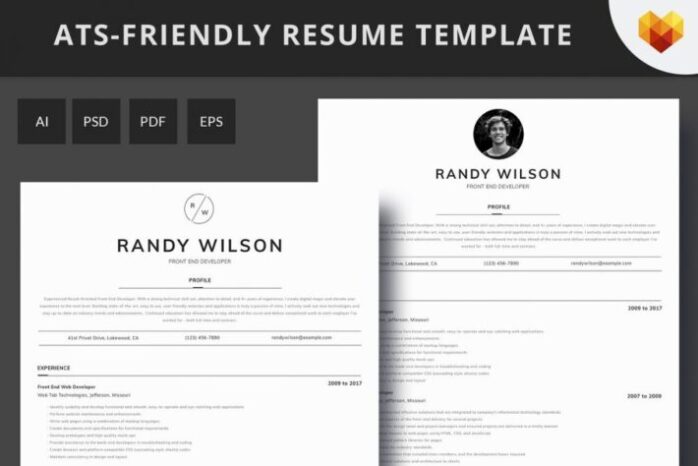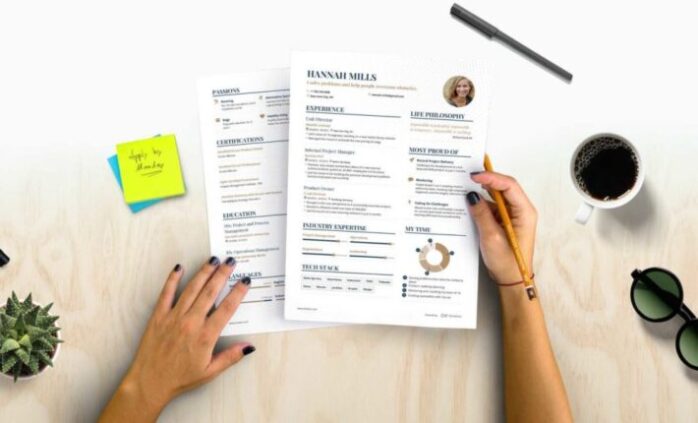
Competition in the job market has never been higher, with redundancies as a result of the Covid-19 outbreak have sent unemployment figures soaring. Now, more than ever before, job seekers need to find ways to ensure their application stands out from the ever-growing pile of CVs or resumes.
So what should candidates do to ensure they get noticed and land that all-important first interview? Our panel of experts offers their top tips for success.
Use an ATS-friendly CV or resume template

According to Criteria Corp’s annual Pre-Employment Testing Benchmark Report, 55% of companies use ATS (Applicant Tracking System) or HRIS (Human Resources Information System) software, and a further 19% are considering adapting this technology. This jumps to a staggering 89% for companies with 500+ employees.
One function of such software is to ‘parse’ and filter job applications, saving the recruiter a great deal of time. “The job of the parser is to extract the key components of your CV, such as your name and email, the degrees you hold, the skills you have and your work experience”, explains Miguel Forte at Workable. “But you need to follow some basic rules to make sure your text can be extracted properly.”
These rules include avoiding graphics (or “Word Art”), columns and tables, all of which can prevent the parser from correctly interpreting your information. It’s also advisable to provide your CV in Microsoft Word format, rather than PDF as not all systems can handle the latter. This means avoiding any fancy fonts which the recipient might not have installed on their PC.
Write a new CV for every application

Writing a fresh CV for each and every application may seem like a lot of extra work – but it’s worth the effort. In a saturated job market, it’s quality rather than quantity that breeds results.
Study the advert carefully and ensure you address the requirements throughout your CV. Use bullet points to ensure that your target employer can quickly verify your suitability for the role. Or you can visit resume-example.com and find some useful advices.
Use a format that’s easy-to-read

With hiring managers spending just a few seconds on each CV, you don’t have long to make the right impression. Ensure your CV can be scan-read and the important facts can be found without having to read blocks of text. The simplest way to achieve this is to stick to a simple, single-column format and write your CV or resume using sections, headings and bullet points.
Write a strong personal statement

Your personal statement can be the most powerful section of your CV if you get it right. “It is like the opening statement in a courtroom hearing which grabs the listener’s attention and makes them want to hear the rest of your case,” explains Jen Wiss-Carline, Solicitor and owner of popular careers site CVTemplateMaster.com.
In 3 or 4 lines, tell the employer exactly how you meet their person specification, AND why they should hire you over other candidates.
Use keywords from the job advert

With many companies turning to an ATS to process their applications, it’s essential to include the right keywords to pass the software.
“It’s becoming fashionable these days to gratify one’s self with a fancy title. JavaScript developers become ninjas and rockstars, online marketers become growth hackers, and before you know it civil engineers will end up becoming architectural transmogrifiers”, notes Forte. But these are not the keywords that recruiters will have programmed into their ATS.
Study the job advert and pick out the words relating to key skills or experience that the employer has used. If your past job title wasn’t the standard description of your role, modify it. If the recruiter is advertising for a ‘Javascript Developer’ and this is fundamentally what you did, use that term to ensure you get an exact match.
Make good use of LinkedIn

A standard CV will never exceed two pages – while a resume rarely goes past one. While it can be difficult to include everything you’ve achieved in this short space, LinkedIn has the answer.
“Your CV can work alongside your LinkedIn profile during the job application process”, explains Jen Wiss-Carline. “Put all the vitally important information in your CV and enrich what you tell an employer using LinkedIn. Your LinkedIn profile has no space limitations, so you can offer a lot more detail. You can also collect some endorsements and recommendations to further boost your credibility.”
Make sure it’s clear what the employer will find on LinkedIn, to incentivise them to look. For example, if you’ve blogged extensively about industry-relevant topics, you might give a few examples on your CV, followed by an invitation to see more on your LinkedIn profile.
Give a Skype handle

More recruiters than ever before are using Skype to conduct interviews and this is especially true whilst Covid-19 restrictions are in place. Including your Skype handle shows you’re open to this form of interviewing and ready to participate in a video chat. This also shows confidence in yourself and your abilities.
Include a Twitter handle

Twitter is a great place to establish your credibility within an industry. You can follow industry leaders, comment on the latest stories and developments, share relevant content and offer up your own content if you’re blogging. Including your Twitter handle on your CV allows prospective employers to see that you’re involved with and passionate about your industry. It also shows that you’re staying in touch with professionally relevant developments.
Blog, blog, blog…

If you’re blogging for your current employer, make sure the hiring manager knows about it. It’s another way to show that you’re immersed in what you do with up-to-date industry knowledge. If you’re not yet blogging, consider starting a professional blog of your own and once you have a few posts, share it on your CV. WordPress is a great way to get into blogging, allowing you to produce a very professional looking site without needing technical ability.
Tell them about secondary skills

You may have skills in addition to those listed within the job specification which are desirable to an employer. “As the economy has contracted and competition for jobs has increased, employers often have to choose from multiple candidates who come with such expertise. This means that secondary and tertiary skills are now more important than ever”, explains Mark Badley, Managing Director of Ronin. These skills, such as IT competence, project management or the ability to train, can help you stand out from other similarly qualified candidates.
Cash-strapped employers may have had to make substantial layoffs in these difficult economic times – and skills that are secondary to your main role could be of great value to them. Consider which skills you have that might be beneficial to the specific employer and include these on your CV or resume within the skills or hobbies section, depending on which feels more appropriate.











